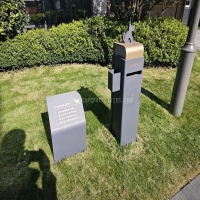Welcome to the website for landscape facilities products and knowledge.
How do landscape tables perform in extreme climates, such as deserts or coastal areas?
Landscape tables are designed to endure harsh environmental conditions, but their performance in extreme climates such as deserts or coastal areas depends heavily on material selection and construction quality.
In desert environments, where temperatures fluctuate drastically between scorching days and freezing nights, landscape tables must resist thermal expansion, UV degradation, and sand abrasion. Powder-coated aluminum or high-density polyethylene (HDPE) are ideal choices due to their resistance to cracking and fading. Additionally, rust-proof hardware ensures longevity despite the arid, abrasive conditions.
Coastal areas pose different challenges, primarily saltwater corrosion and high humidity. Stainless steel or marine-grade aluminum tables with protective coatings perform best, as they prevent rust and deterioration. Teak wood is another excellent option due to its natural oils that repel moisture and insects. However, regular maintenance is often required to combat salt buildup.
For both climates, proper anchoring is critical to prevent wind damage. Heavy bases or ground-fixed designs enhance stability during storms or strong desert winds.
Ultimately, investing in high-quality, climate-adapted landscape tables ensures they remain functional and aesthetically pleasing for years, even in the most demanding environments.
Related search:

Recommendation
Outdoor cat and dog feces trash can; Community pet trash can; Metal multi-color design